STEM Soup!
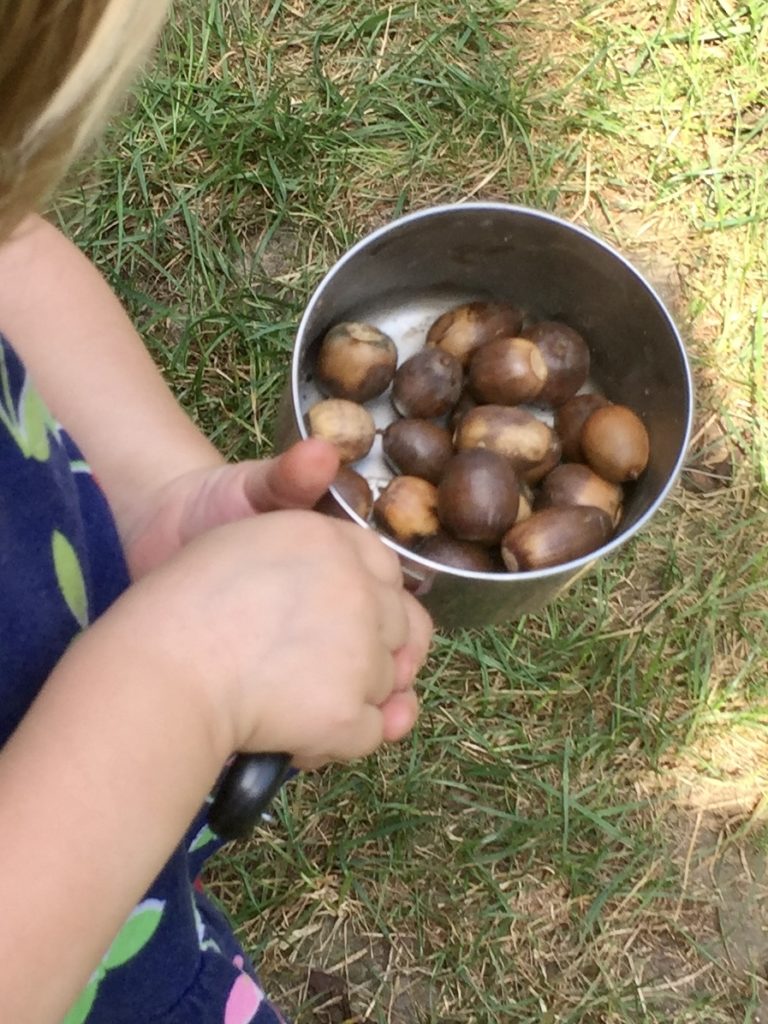
“Who wants soup? I am making soup for lunch today!” Eleanor shouts to anyone willing to join her as she “cooks up” her concoction.
Eleanor is our concoction wizard. She can often be found adding loose parts to a large pot of water, mixing away while she muses about the ingredients she needs to add to her “recipes” for soup, magic potions and smelly perfumes.
“Aw, I don’t want soggy flowers in my soup!” Jose protests as he peers into the pot. “I like it better when you sprinkle them on top. Can you make the flowers dry again?”
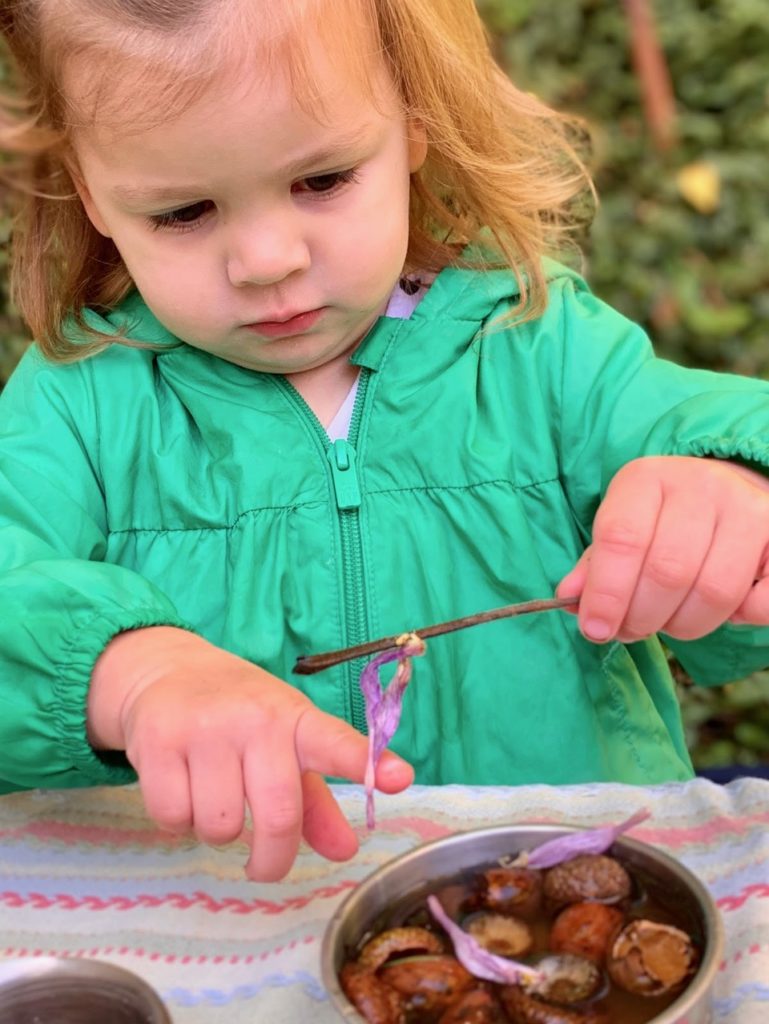
Eleanor is a master at transforming dry flower petals into wet soup ingredients. But she hasn’t yet mastered the art of drying the wet petals with a swish of her stick.
“I can’t make them ‘not soggy’ anymore,” she admits. “But I can add some dry ones on top for you, sir.”
Questions such as “can it be undone” or “can I manipulate this” are all part of the learning process as our students engage in play with loose parts to investigate the phenomenon of transformation.
“Okay, great!” agrees Jose. “Can I have lots and lots of the red flowers on top, please?”
James comes running over to join the play. “What smells so delicious?”
“Acorn soup!” the children shout in a chorus of excited voices.
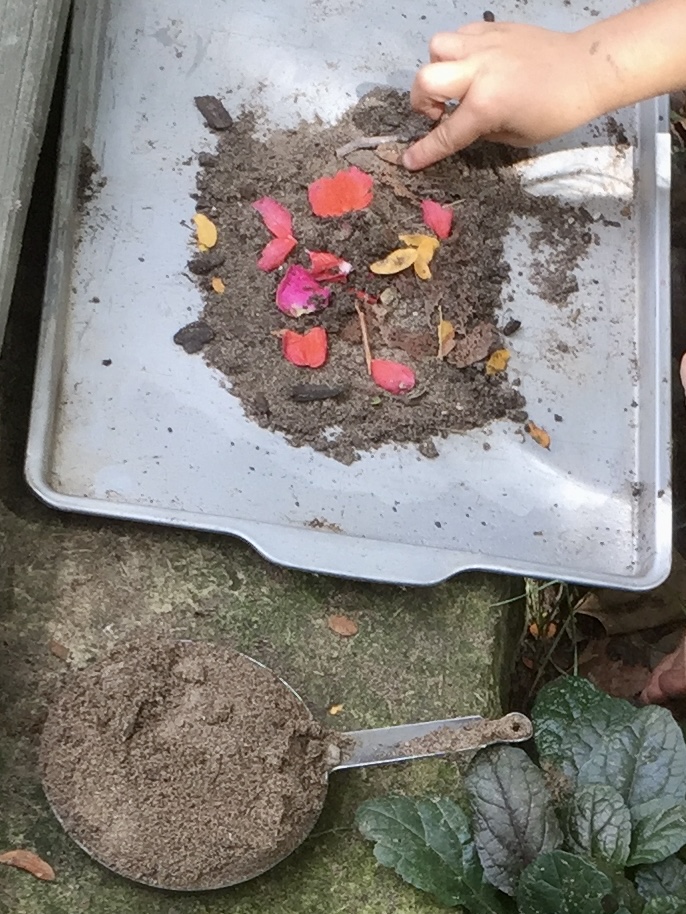
Our sensory-play kitchen is alive and well!
Sensory play activates and engages the senses—including touch, smell, taste, sight and hearing—while promoting the development of fine-motor and gross-motor skills.
When children engage in sensory play, they build new neural connections. These connections lay the foundation for language and motor development, creativity and essential life skills such as problem-solving, decision-making and memorization.
Imagine all of this cognitive development arising from a pot of acorn soup!
Acorn soup—or any magical, mystical concoction—can help children develop an understanding of math concepts in myriad ways, but most obviously through the use of mathematical language.
Imagine children mixing materials and discussing whether or not they should add more flowers, herbs, sticks, stones, pine needles or bark.
Quantity is a central concept in mixing. So it makes sense to incorporate pots and pans of all sizes, as well as measuring cups, to stimulate inquiry-based learning about quantity and volume, as children ask questions such as “How much should we add?” or “Do we want it to be thick like stew or thinner like soup?” It’s all part of building a child’s math vocabulary.
I could line up six young chefs to cook up pots of acorn soup and no two “recipes” would be alike. Children love to direct their own learning as they observe the “cooking” process and evaluate the ingredients that will make the best pot of “soup.” This is critical thinking at its best!
Whether you are cooking for play or actual consumption, it’s important to give children their own pots, bowls, measuring cups and utensils. Watching a friend cook is just not the same as engaging in hands-on, inquiry-based learning.
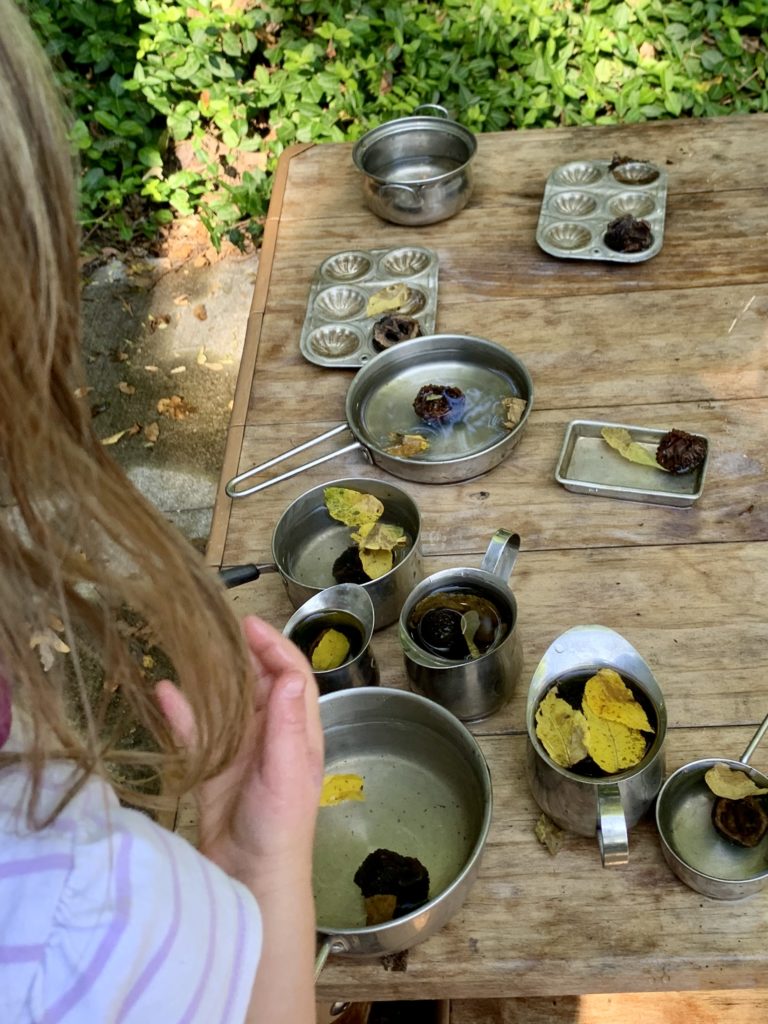
Real pots, pans, spoons, measuring cups and utensils help to “keep it real.” I delight in finding miniatures of good-quality cooking utensils. I love to use small stainless steel bowls. They are just the right size and they are affordable and easy to find at thrift stores. The same applies to measuring cups and spoons. Go with the stainless steel versions whenever possible. They always present well and they are sturdy and stain-resistant.
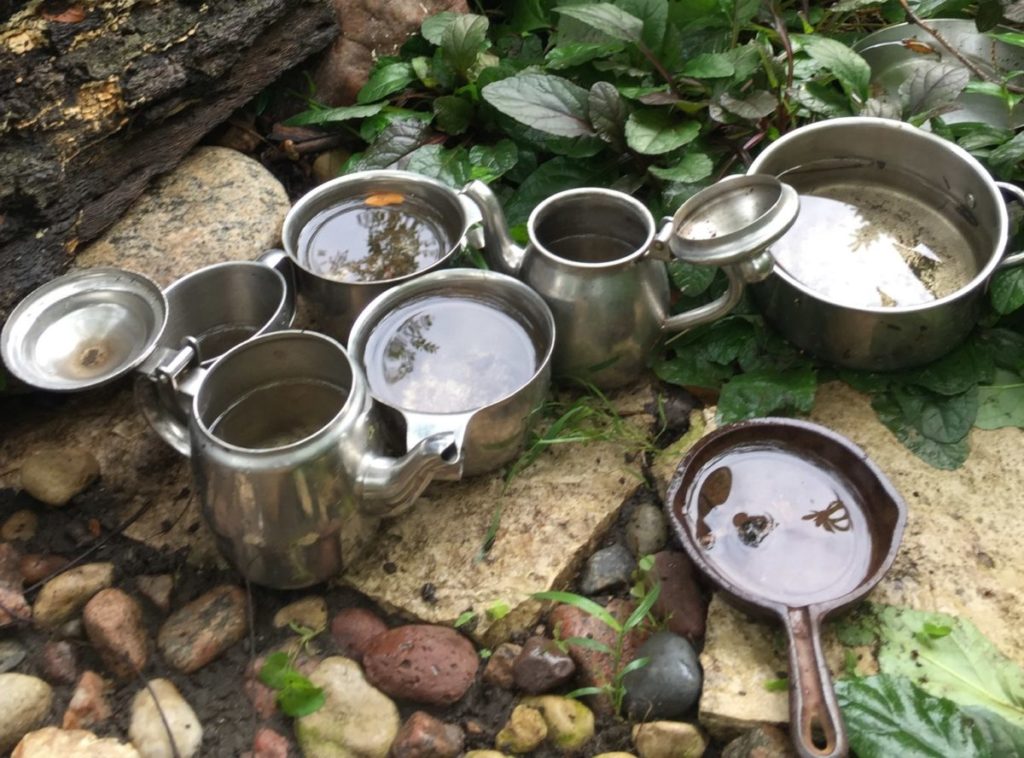
Children who are constantly engaging in “science experiments” or cooking up concoctions such as acorn soup are often exploring the transformation schema.
A schema is a repetitive pattern of behavior as children explore the world around them. Children who engage in the transformation schema will be fascinated by objects and their potential for transformation.
Play in this schema can be as simple as the transformation from dry to wet, from empty to full or from solid to liquid. Encourage children to investigate questions like these:
“How does this object change when I add water?”
“Does the color change?”
“Does the texture change?”
“Does it smell different?”
By identifying and supporting schema play, you can tap into children’s interests and instincts while deepening and intensifying play and learning experiences.
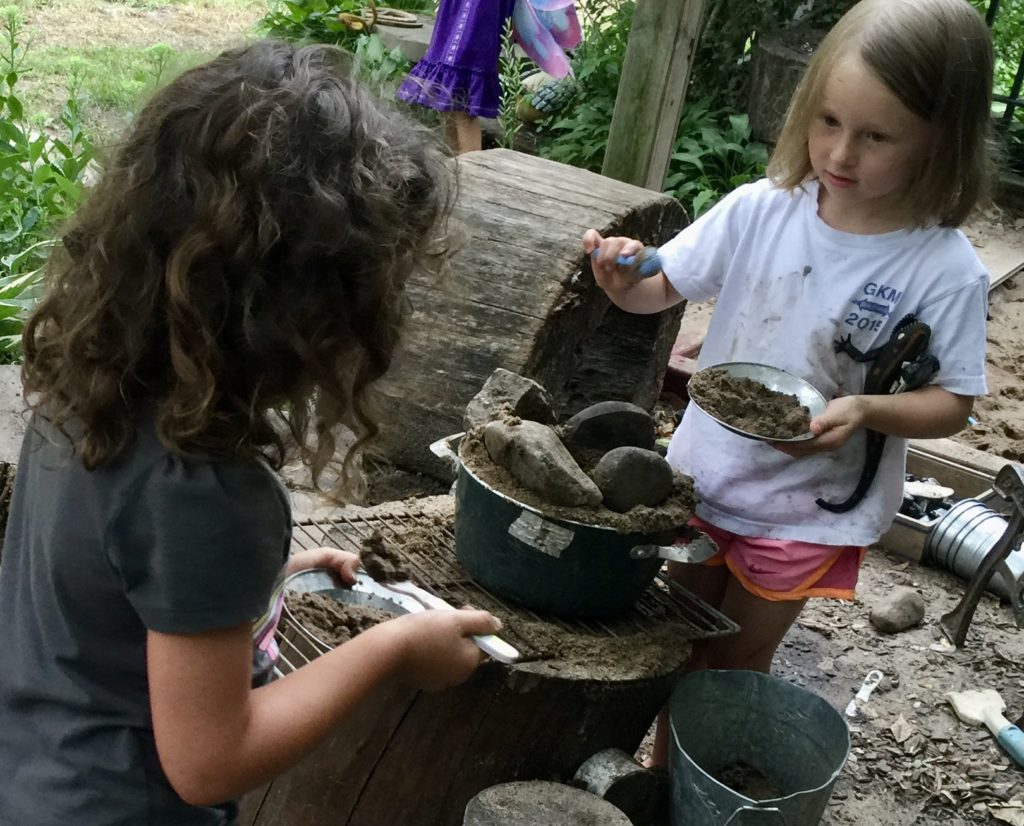
This is what STEM looks like! These preschool play moments pave the way for later learning in science, technology, engineering and math.
Experiences like these are integral to our mission here at Early Math Counts. Math is everywhere—in everything that we do with children and in every classroom activity. But we need to make the most of these math learning opportunities.
“Eleanor, is the soup ready yet?” Tucker asks from the other side of the yard. “How long does it have to cook?”
Ah, the ever-important gift of time. These periods of uninterrupted play stimulate brain development in a big way while enhancing children’s understanding of how the world (and math!) works.
So get your soup on!
I love this idea! Incorporating math into dramatic and outside play can add variety to traditional teaching methods and keep subject material engaging for all. I will definitely be incorporating math into outside time!
I love this idea! Incorporating math into dramatic and outside play can add variety to traditional teaching methods and keep subject material engaging for all. I will definitely be incorporating math into outside time!
I love how you changed the perspective of the children with the way they view mathematical concepts in everyday life such as this activity. Very creative!
I love all the ideas.
This is such a great way to extend a typical,naturally occurring incident with young children. I think it’s so easy to become engrossed in observation as a teacher that it can be easy to miss ways to extend a child’s work